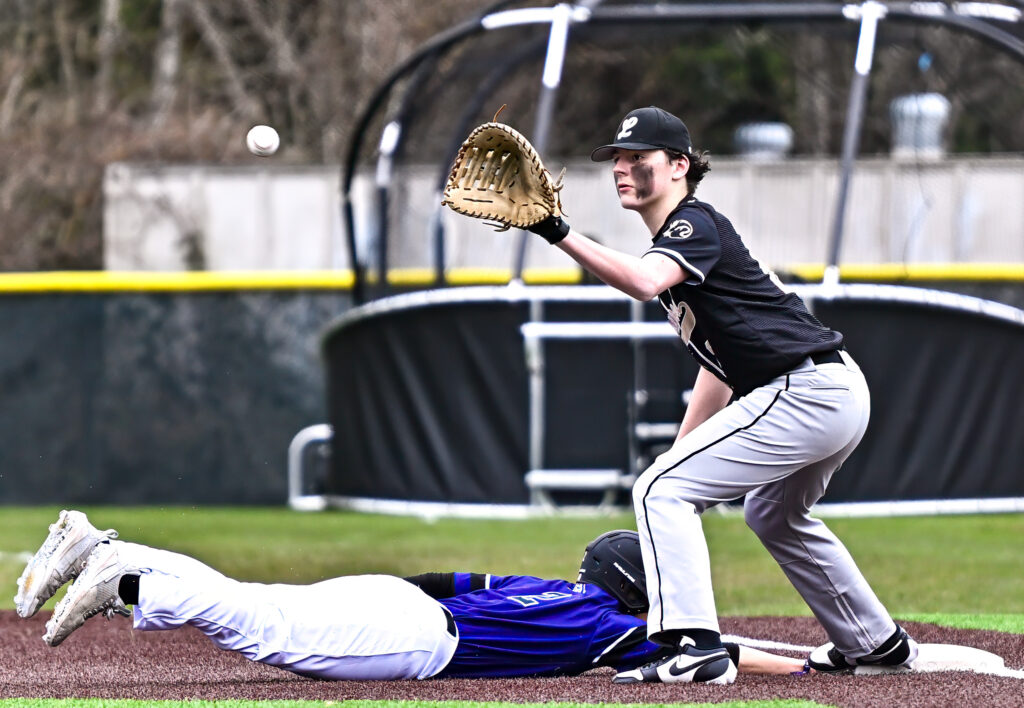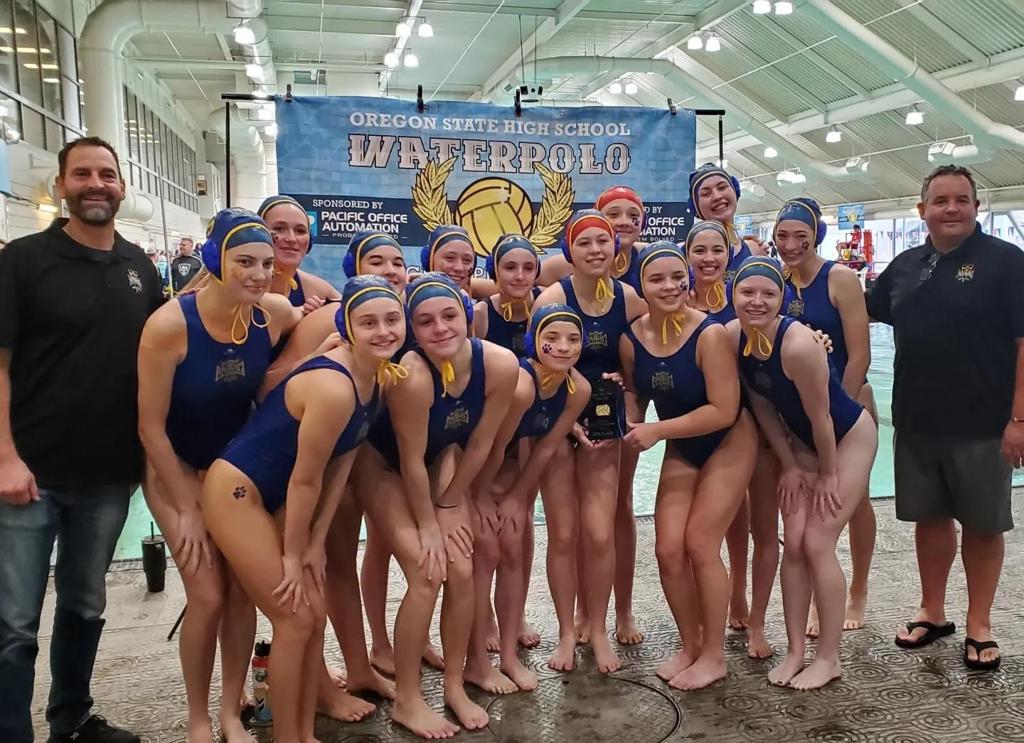Rec Sports
Greenwood Parks begin summer hours on Thursday
Courtesy of GPR GREENWOOD, Ind. – With warmer weather here, Greenwood Parks and Recreation is ready for visitors and residents to experience the city’s state-of-the-art outdoor amenities. The City of Greenwood hosts 17 parks, spanning 400 acres, that feature scenic walking trails, sports facilities, and recreational programs for all ages. Starting Thursday, May 1, all […]


Courtesy of GPR
GREENWOOD, Ind. – With warmer weather here, Greenwood Parks and Recreation is ready for visitors and residents to experience the city’s state-of-the-art outdoor amenities. The City of Greenwood hosts 17 parks, spanning 400 acres, that feature scenic walking trails, sports facilities, and recreational programs for all ages.
Starting Thursday, May 1, all parks’ restrooms will open and transition to their extended summer hours, operating from 7:30 a.m. to 10:30 p.m.
The city’s trail system hosts over 50 miles of multi-use paths winding through Greenwood’s natural park spaces. The most popular trails include Tracy Trail, Play Pocket Trail, Grassy Creek Trail, and Freedom Park Trail.
Now officially open for the season, the Greenwood Sports Park features eight sports fields, a modern playground, a splash pad, and a versatile multiuse field, including a regulation cricket pitch.
Freedom Park’s 16-court pickleball complex is open daily from dawn to dusk. The complex boasts LED lighting and eight shade structures. The second annual Greenwood Freedom Cup is May 10 and 11, featuring a pool play round robin format with top teams advancing to a single-elimination playoff.
Spring youth sports programs are underway, offering activities such as basketball, baseball, softball, archery, and soccer. Adults can also register for softball, volleyball, archery, and pickleball.
Follow Greenwood Parks and Recreation on Facebook to stay connected and learn more about future events this spring and summer in Greenwood. For league registration and additional details on amenities, visit the Greenwood Parks and Recreation page online.
Rec Sports
U.S. Center for SafeSport Releases Summer Safety Checklist
U.S. Center for SafeSport Releases Summer Safety Checklist Questions to ask prior to summer youth sports leagues and activities to help safeguard against abuse The U.S. Center for SafeSport (the Center) today released a Summer Safety Checklist outlining important questions parents and guardians can ask to support children’s safety and reduce the risk of abuse. […]

U.S. Center for SafeSport Releases Summer Safety Checklist
Questions to ask prior to summer youth sports leagues and activities to help safeguard against abuse
The U.S. Center for SafeSport (the Center) today released a Summer Safety Checklist outlining important questions parents and guardians can ask to support children’s safety and reduce the risk of abuse. Released prior to the start of summer sports leagues, camps, and other programming, the list is designed to reveal the measures youth-serving organizations have in place to prevent and respond to sexual abuse and misconduct.
“Every single child should have the opportunity to learn and thrive through athletic activities—the benefits of sport participation have followed me throughout my entire life,” said April Holmes, interim CEO of the U.S. Center for SafeSport and four-time Paralympian. “Asking safety questions helps to demonstrate one of the most important life lessons for young athletes: their well-being matters.”
“Safety is not just the foundation for play and growth, but something that every child deserves,” Monica Rivera, Vice President, Education & Research at the Center said. “SafeSport’s Summer Safety Checklist helps parents and guardians ask the right questions to ensure the children in their lives have a fun and healthy experience during summer sport leagues and other activities.”
U.S. Center for SafeSport Summer Safety Checklist
Eight questions to ask before your child starts a summer program
Whether your child is joining a summer sports league or heading off to camp, the answers to these questions can help you evaluate a program’s preparedness to prevent and respond to abuse and misconduct. Discover the answers to these questions by contacting a program administrator or checking a program’s policies.
- What are the criteria for volunteer and staff screening and background checks?
- How are program participants supervised during structured activities and free time?
- What kind of abuse prevention and response training do volunteers and staff undergo?
- Do you have policies that limit unsupervised one-on-one contact between adults and minors?
- What are the established processes for reporting and responding to abuse and misconduct?
- How do you communicate expectations about how program participants treat one another?
- What are the sleeping arrangements for program participants and overnight staff or volunteers, and how are they monitored? (For overnight programs)
- Is an adult emergency contact available 24/7? (For overnight programs)
In addition to the SafeSport Summer Safety Checklist, the Center offers numerous educational resources to prevent, recognize, and respond to abuse and misconduct in and around sport and other active settings.
The Center’s Parent and Guardian’s Handbook for Safer Sport is designed for parents of athletes of all ages. This free resource explains the issues of misconduct in sport and helps parents ensure their children have a positive and safe sport experience. Lastly, if you’re a parent or youth sports coach, take a moment to check out SafeSport’s Summer Playbook and explore more resources to support you this season.
Need for Abuse Prevention in Sport
The U.S. Center for SafeSport is the nation’s only independent organization dedicated to ending sexual, physical, and emotional abuse in U.S. Olympic and Paralympic sport. The Center emerged in response to high profile cases of sexual abuse of minor athletes within Olympic and Paralympic sport in the mid-2010s. With the mission of making athlete well-being the centerpiece of the nation’s sport culture, the Center has since been setting safety policies, and receiving, investigating, and resolving complaints of abuse and misconduct. The Center also serves as an educational resource for sports organizations at all levels, from recreational sports organizations to professional leagues.
With the goal of ensuring athletes within the U.S. Olympic and Paralympic Movement are safe, supported, and strengthened, the Center:
- Establishes safety policies, including the SafeSport Code and the Minor Athlete Abuse Prevention Policies (MAAPP).
- Investigates and resolves allegations of abuse and misconduct and levies sanctions, including temporary and permanent bans from sport.
- Delivers comprehensive abuse prevention education within and outside of the U.S. Olympic and Paralympic Movement.
About the U.S. Center for SafeSport
The Protecting Young Victims from Sexual Abuse and Safe Sport Authorization Act of 2017 codified the U.S. Center for SafeSport (the Center), as the nation’s safe sport organization. It furthered the Center’s independence while underscoring its authority to hold individuals accountable. It also charged the Center with developing policies, procedures, and training to prevent abuse and misconduct in sport.
In October of 2020, the Empowering Olympic, Paralympic, and Amateur Athletes Act of 2020 became law, even further strengthening the Center’s independence and oversight functions while mandating minimum funding requirements for the U.S. Olympic & Paralympic Committee.
The Center opened its doors in March of 2017.
Reporting and Resources
Report here to the U.S. Center for SafeSport if you have experienced abuse or misconduct—or if you have reasonable suspicion of abuse or misconduct—inflicted by someone in the U.S. Olympic and Paralympic Movement. You can also leave a message by calling the Center at: 833-587-7233.
RAINN’s 24/7 online hotline is available for crisis intervention, referrals, or emotional support at any time. You can also call RAINN at: 800-656-HOPE (4673).
The Suicide Prevention Lifeline provides 24/7 free and confidential support at 988lifeline.org or by calling 988.
media@safesport.org
View source version on businesswire.com: https://www.businesswire.com/news/home/20250506047415/en/
Rec Sports
Dream Big: Arnold Woman Supports Young Girls With Boston Marathon Run
Gabby Driscoll took several steps to support young girls on April 21 when she participated in the charity component of the Boston Marathon with team Dream Big! An Arnold resident and physical therapist, Driscoll raised over $10,000 of her team’s $185,000 total. In less than five hours, she finished the 26.2-mile race, which began in […]
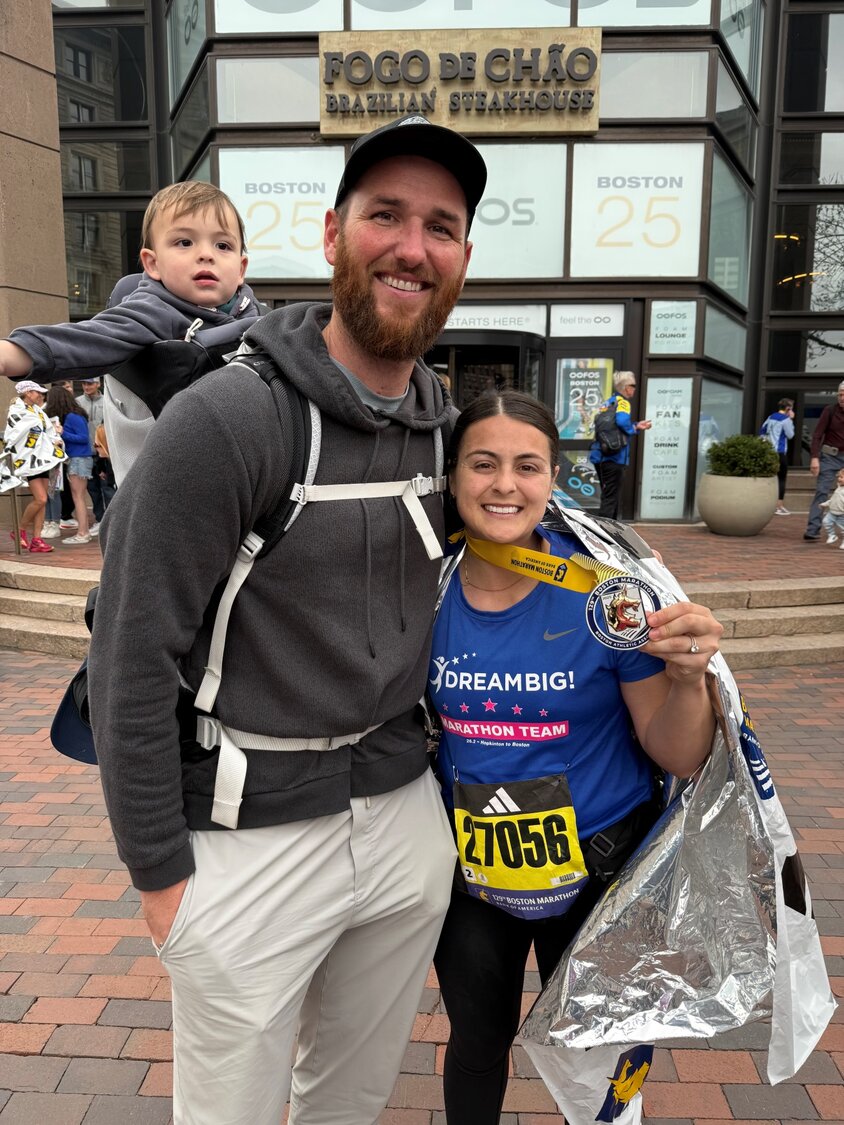
Gabby Driscoll took several steps to support young girls on April 21 when she participated in the charity component of the Boston Marathon with team Dream Big! An Arnold resident and physical therapist, Driscoll raised over $10,000 of her team’s $185,000 total.
In less than five hours, she finished the 26.2-mile race, which began in the town of Hopkinton and ended in Boston’s Copley Square.
“Just like everyone says, the environment is electric,” Driscoll said. “I couldn’t believe the weather was as good as it was (sunny and breezy). I haven’t felt a sense of accomplishment like that in my life, although it was initially overshadowed by my shaky and heavy legs trying to get from the finish line to the Westin Hotel a few blocks over to meet my family.”
As the 2012 Severna Park High School graduate told the Voice in March, the idea started as a promise she made with a friend during their college days at Rutgers University.
With her marathon run, she supported Dream Big! The nonprofit empowers young girls from under-resourced communities by providing them with scholarships, mentorship and athletic opportunities.
“The weekend leading into the marathon, I learned how much of an impact running for a charity had, not just on the girls we helped, but for me to be a part of something so much bigger than running 26.2 miles,” she said. “I went to a Dream Big! brunch where three girls that have benefitted from this charity spoke about how they were fortunate to work with Dream Big! to help them get basketball scholarships. Having grown up in rough neighborhoods, seeing things a young kid shouldn’t see … and to see this same girl work with Dream Big! to get assistance to go to college showcases and become the Gatorade Player of the Year for her grade in basketball. I was touched and it really just hit home how fortunate we are.”
The Boston Marathon experience connected Driscoll with other runners and marathoners close to home in Anne Arundel County. “It’s an amazing community of very kind and selfless people,” she said of them.
“I will cherish this experience for the rest of my life,” she added.
Rec Sports
Gymnastics coach’s sexual abuse leaves scars in Missouri
Content warning: This story includes references to and descriptions of child sexual abuse. Kampbell Hemeyer watched a little boy run out of the courtroom, pleading with court officers. “I don’t want to, I don’t want to, I don’t want to go with Dad,” he cried. The little boy’s well-worn Ninja Turtles shirt and light-up shoes […]
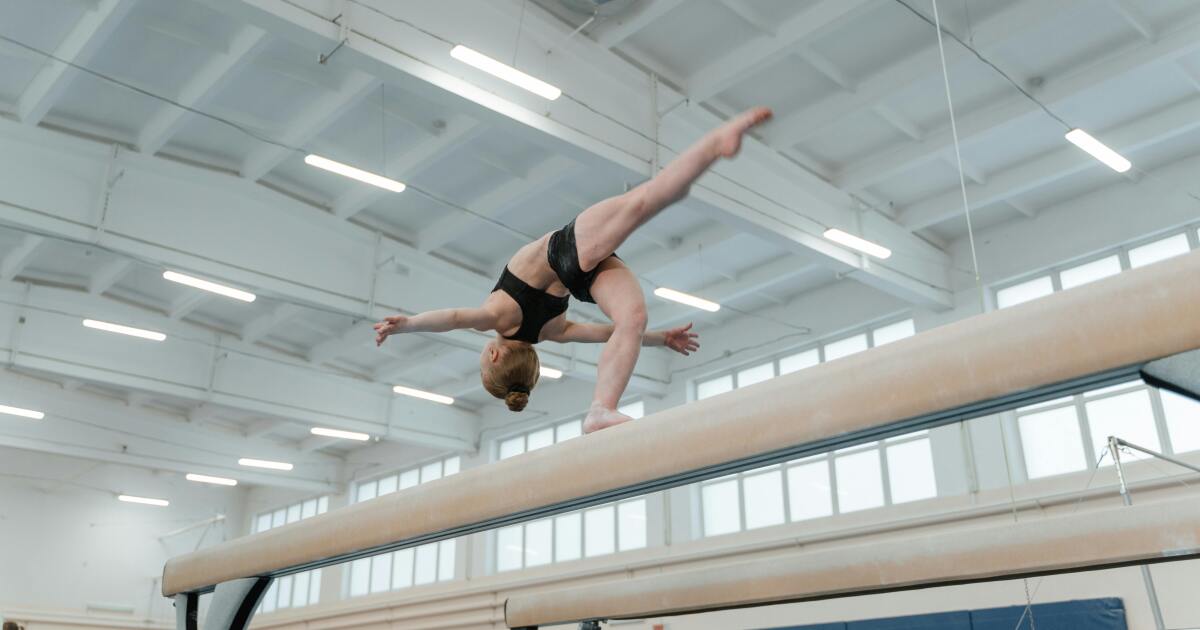
Content warning: This story includes references to and descriptions of child sexual abuse.
Kampbell Hemeyer watched a little boy run out of the courtroom, pleading with court officers.
“I don’t want to, I don’t want to, I don’t want to go with Dad,” he cried.
The little boy’s well-worn Ninja Turtles shirt and light-up shoes were nothing like her dress pants and blazer. But when they locked eyes, Hemeyer saw herself in him. She no longer wanted to be in the courthouse. She didn’t want to face her abuser. For the first time, she turned to her mother and cried.
“My brain hadn’t fully grasped the concept of me being there quite yet,” said Hemeyer, who turned 18 not long before the trial. “I was about to face my abuser for the first time since everything happened, since before the investigation really got going. I just felt an immense feeling of how none of this is fair for children, kids who are surviving going through court.”
Hemeyer’s feelings about seeking justice are not unusual. In several cases reviewed by The Midwest Newsroom, offenders might not face legal consequences. Parents grapple with whether to report incidents, and survivors wonder if going to law enforcement with their accusations is worth it.

Photo courtesy of Washington Police Department
Hemeyer’s abuser, former volunteer gymnastics coach David Schneider, is at the South Central Correctional Facility in Licking, Missouri, where he is serving a 50-year prison sentence for four counts of child molestation and one count of attempted molestation.
The charges stem from his time as a gymnastics coach at the now-closed Kids in Motion gymnastics gym in Washington, Missouri, where he volunteered from 2011 to 2014. The gym was owned by Piper Hoemann.
The gym reopened at a new location and under a different name, Fitness Made Fun, in 2018. Its owner is Nadiana Peck, the previous owner’s daughter. Peck declined to answer questions from The Midwest Newsroom.
Hemeyer and other gymnasts accused Schneider of sexually abusing them during a stretching exercise known as “over splits,” where coaches assist gymnasts by straightening their legs and pushing down on the gymnasts’ hips to create a deeper stretch. Often, at least one leg is elevated during the over splits.
Hemeyer said she was around 10 years old when the sexual abuse began. She started at Kids in Motion when she was 8 years old and continued gymnastics until her freshman year of high school.
Schneider was safety certified by USA Gymnastics, the national governing body for the sport, and attended five clinics on upper-level spotting techniques, according to trial documents.

Schneider’s initial interview with the Washington (Missouri) Police Department about sexual abuse allegations was on Feb. 6, 2018. That same month, USA Gymnastics placed Schneider on its list of permanently banned former professional members, which means he is not eligible to coach at USAG member gyms or USAG meets.
The sanctions came a month after Larry Nassar, the disgraced former USA Gymnastics and Michigan State University doctor, was sentenced to 40 to 175 years in prison. Nassar pleaded guilty to seven counts of criminal sexual conduct and admitted to using his trusted position to assault and molest girls, many of them gymnasts and other athletes, under the guise of medical treatment.
When safeguards fail
Kids in Motion was affiliated and competed with USA Gymnastics until its membership ended when the gym closed. Coach or professional membership is required for participation and credentialing at USA Gymnastics-sanctioned events. Although coaches at member clubs are not required to be USA Gymnastics members, USAG member clubs are prohibited from allowing anyone on the banned list to coach in their club.
The federal Safe Sport Act of 2017 says that all adult members interacting with youth athletes are mandatory reporters. Any suspected child abuse, including sexual abuse, must be reported within 24 hours to the appropriate law enforcement agency.
During his trial, Schneider’s victims reported that for years, he repeatedly slid his hand down girls’ legs and into their shorts during these stretches. The abuse ranged from touching the inside of their shorts, over their leotards, to inside their leotards or even touching their genitals. He would say things like, “Sorry, hon,” to the girls, but make no effort to remove his fingers.
Before coaching Hemeyer and her fellow gymnasts, Schneider played a key role in establishing the swim program at the Four Rivers YMCA in Washington, Missouri, where he coached a team for over a decade. Additionally, he coached another swim team in Union, Missouri. In 2009 he served as the girls volleyball and soccer coach at Crosspoint Christian School in Villa Ridge, Missouri.
Delays caused by the COVID-19 pandemic and legal proceedings pushed the start of his trial to March 29, 2022. Two days later the Franklin County jury convicted Schneider on four counts of child molestation, and one count of attempted molestation.
Hemeyer was among those who testified against Schneider.
“Going on stand was hard,” Hemeyer said. “You’re being asked really, really tough questions and being asked by the defense about things that are supposed to trip you up, and you feel like you’re being victimized all over again.”
Silence or justice?
Danielle Schmidt placed her daughter in gymnastics at Kids in Motion when the child was 5 years old. Schmidt was a coach at the gym and even worked alongside Schneider on occasion. One day after practice, when her daughter was 8 years old, she told her mom she didn’t like it when coach Dave put her in the over splits. Schmidt asked why, and her daughter responded, “He touches me down there.”
The Midwest Newsroom is not using the daughter’s name because she is a sexual abuse survivor who does not want to be identified.
“She was absolutely devastated, mortified and angry with me because she did not understand why I had to tell on her,” Schmidt said. “Her biggest fear was that Dave was going to find out that she told on him. It wasn’t that he touched her, it was that he was going to be mad at her because she told on him.”
Schmidt called the owner of the gym, Hoemann, whose husband worked as a state trooper. She said Hoemann had Schmidt’s daughter show her exactly how Schneider was touching her.
Hoemann told Schmidt that her husband — the state trooper — said it wouldn’t be worth pursuing because the court would rule in favor of the coach, Schmidt said. The Midwest Newsroom could not reach Hoemann for comment.
A 2014 National Institute of Justice study of child sexual abuse investigations found anywhere from 22% to 47% of cases are declined by prosecutors. Further, the researchers found over 90% of cases involving allegations of sexual abuse of a minor did not continue to trial after details were analyzed by the prosecution. Some recent research has shown that while a small proportion of cases result in criminal charges, once charges are lodged, cases are actually much less likely to end in a dismissal.
Schneider has appealed his conviction. Bryan Mathews is the prosecutor currently assigned to the case.
“The difficulty in these cases is they happen behind closed doors or they’re one-on-one crimes, typically,” Mathews said. “It’s very, very seldom that we have a case where there is an eyewitness who can speak to the actual criminal acts that took place outside of these children.”
Like many parents, Schmidt wanted to protect her child from the ordeal of a trial, and from having to face her abuser.
“I had to decide whether I was going to put my 8-year-old on the stand all by herself against Dave,” Schmidt said. “The more I thought about it, the more I realized putting her, at 8 years old, on trial is probably going to be more emotionally devastating than the act itself.”
‘No zones’ and caution
Two weeks after Schmidt discussed her concerns with Hoemann, Hoemann sent a memo to the Kids in Motion staff titled “Molestation Policy.” The memo, reviewed by The Midwest Newsroom, listed positions to avoid, specifically that girls are not to be taken to do the over-splits stretch in a one-on-one setting.
Hoemann wrote in her memo to staff: “This gym has been subject to complaints and concerns with direct violations mandated or suggested in our policy. I admonish everyone to take these new policies very seriously. Accusations, whether true or false, can tear apart families, destroy reputations, and tear apart this program which we have tried so hard to build. The following revisions are put into my own words, so they can be better understood. Please understand these policies are for your own safety.”
The memo goes on to list “No zones” where gymnasts are to not be touched. It continued, “Male coaches be EXTREMELY cautious.”
Under Missouri law, Hoemann should have reported the abuse to police immediately after Schmidt told her what had happened to her daughter. Hoemann pleaded guilty in 2019 for misdemeanor failure to report child abuse.
“Because of your failure to report, (Schneider) was allowed to continue working with little kids,” Franklin County Assistant Prosecuting Attorney Michael Hayes asked Hoemann during the trial. “Yes,” Hoemann responded.
‘Not set up for children’
Ella Kroeter was 2 years old when she took her first “mommy and me” gymnastics class. She loved gymnastics. She was around 6 when Schneider became one of her coaches at Kids in Motion in 2012.
She said Schneider repeatedly put his hands up her shorts and touched her crotch area when she was a third-grader. She remembers telling one of the older girls, Hoemann’s daughter Gabrella, about the abuse.
“She (Gabrella) threatened me that if I ever said that again, I would be kicked off the team and out of the gym,” Ella said. “Gymnastics was everything to me, so I didn’t say anything else about it.”
On a December morning in 2017, as a news story aired on the family television about the Marshall Faulk sexual harassment case, Ella walked into the room and said, “It was like when coach Dave got fired for sticking his hands up our shorts doing the splits.”
The Marshall Faulk case involved Jami Cantor, a former NFL employee, filing a wrongful termination lawsuit claiming the former NFL star and other players had sexually harassed her.
This was the first that Jennifer Kroeter, Ella’s mother, had heard about Schneider sexually abusing her daughter.
Ella went to school that day, but her parents stayed home from work to discuss the next steps to take. They called Hoemann and set up a meeting with her to discuss the abuse. Hoemann wouldn’t meet them inside the gym, Kroeter said. Instead, the meeting took place by storage units in the parking lot.
Standing in the cold that day, Ella (by that time, around age 12) told Hoemann her story. According to Jennifer Kroeter, Hoemann asked a few questions and told the family she would get back to them in a week.
“I didn’t have the guts to go to the police that night,” Jennifer Kroeter said. “I was too worried about how it was going to affect her. Once we did, and I saw how it played out, it wasn’t pretty.”
A week passed, and the family heard nothing from Hoemann, Kroeter said.
Christmas of 2018 came and went. Ella returned to school from break, and while her parents were mulling over what to do, she went to the school counselor, Shelly Struckhoff. Ella told Struckhoff everything that happened, and as a mandated reporter, Struckhoff contacted police.
“It was like a huge relief, because we just didn’t know what to do,” Jennifer Kroeter said. “We were just like, ‘Oh my God, why didn’t we just do this two weeks ago?’ We were agonizing, asking ourselves, ‘Do we want to put our daughter through this?’”
Jennifer and her husband, Matt Kroeter, both teachers and mandated reporters, have encountered children sharing confessions they were required to report. Jennifer Kroeter has witnessed firsthand how these experiences often fail to deliver the outcomes the children and their loved ones hoped for.
“The system is not set up to cater to the victims. It’s set up for the defendants. And there were times when I felt like we were the ones doing something wrong.”
Jennifer Kroeter, parent
The couple grappled with exposing Ella to the extreme stress of a trial, possibly for nothing.
City of Washington detective Lt. Steve Sitzes was a co-investigator on the case. He said children who testify about abuse face a lot of struggles long after their cases are over. They are often labeled as victims, a title that stays with them throughout high school and even college.
Survivors in the Larry Nassar case have spoken about the relationship they have with the word “victim.” This label was used to define them during the case, and sticks with many of them today.
“You never want to tell a parent that they’re wrong for not letting their child testify,” Sitzes said. “In a small town like this, everybody knows everybody else’s business. Parents have to ask themselves, ‘Do you want that known?’”
In cases with no physical evidence, juries rely on victim statements to come to a verdict. In the case against Schneider, each girl gave nearly identical testimony. Court records show girls from different classes and ages, many who didn’t know each other, all described the abuse in the same way.
“After going through the trial, I am thankful that I didn’t do it when (my daughter) was 8,” Danielle Schmidt said. “He would have walked free if she was by herself. He would have gotten away with it. So in the end, it was a blessing that I waited and that the numbers had stacked up once the girls were aware and together.”

Kristofor Husted/The Midwest Newsroom
A team, again
Although the trial came years after the abuse, testifying brought up emotions and memories that took the girls right back to when they were in the gym with Schneider.
“I just felt an immense, intense feeling of how none of this is fair for children,” Hemeyer said. “You don’t really know what to expect and you don’t know how hard it’s going to be, going in this room with these officials who are in these robes and look scary, facing really sad situations in your life. And it just felt so unfair to me and to all the girls who were affected by him.”
The trial was a heavy time for all parties involved, but alongside the Schmidt family fighting for justice for their daughter, they were grieving the death of their 12-year-old son. Schmidt and other parents had to take the stand.
“I knew in the back of my mind that they were going to put me on the stand and rip me apart. I was emotionally vulnerable. I was mentally vulnerable. I was grieving and I knew I was going to be the one that they were going to try and mentally manipulate to win the case. I was terrified,” Schmidt said.
Sitzes said that ultimately, it was the girls’ testimony that led to Schneider’s conviction. In addition to telling their stories, the girls had to demonstrate what the abuse looked like on dolls.
“It took a lot of courage to get up there and tell your story in front of a courtroom full of people. It really did.”
Lt. Steve Sitzes, City of Washington detective
Today, the gymnasts who testified still experience psychological effects from the sexual abuse they experienced as children.
“It created trust issues with some of my male coaches, all males, really,” Ella Kroeter said.
An excerpt from Kampbell Hemeyer’s victim statement shows just how deeply Schneider’s abuse affected her.
“I look back at my naive self and I am filled with pity for that little girl. I was roughly 10 years old at the time, and ever since then, my view of physical touch, intimacy, and self-worth is different, wounded if you will, by Dave Schneider’s actions. My view on the world has been altered, and my life has never been the same.”
“It’s like there’s a part of me that’s dead inside despite my efforts in ignoring it and convincing myself that I am stronger than my past. A part of me that Coach Dave killed. The part that should embrace the affection shown by loved ones feels damaged; instead of feeling the love they have for me, I feel nervous and anxious at their initial touch.”
Hemeyer said despite these life-altering events, the survivors want to inspire others to get justice from their own abusers.
“Try not to be scared and be a voice for other victims,” Ella said. “Get your voice out there; speaking about it helped lift a weight off my shoulders.”
Hemeyer brought up a quote to finish her victim statement: “Lighthouses don’t go running all over an island looking for boats to save; they just stand there shining.”
If you need help or support:
There are many resources available for survivors of sexual abuse, harassment, assault or domestic violence. Here are two national resources:
The Midwest Newsroom is an investigative and enterprise journalism collaboration that includes Iowa Public Radio, KCUR, Nebraska Public Media, St. Louis Public Radio and NPR.
There are many ways you can contact us with story ideas and leads, and you can find that information here.
The Midwest Newsroom is a partner of The Trust Project. We invite you to review our ethics and practices here.
METHODS
To tell this story, reporter Gabrielle Lindemann viewed publicly available documents regarding the David Schnieder case including court opinions, police records and trial transcriptions. She interviewed survivors of sexual abuse and parents of survivors for over a dozen hours. She spoke with experts regarding child sexual abuse and youth sports. This story draws on interviews and documents collected for over two years.
REFERENCES
“Former gymnastics coach David Schneider sentenced to 50 years in state prison for child molestation” (The Missourian | June 1, 2022)
“Permanently Ineligible and Ineligible Members and Participants” (USA Gymnastics | continuously updated)
Larry Nassar sentenced to up to 175 years in prison for decades of sexual abuse
(CNN | Jan. 24, 2018)
Safe Sport Authorization Act of 2017
(Congress.Gov | March 6, 2017)
National Criminal Justice Reference Survey
(NJRS | March 2019)
Marshall Faulk case
(New York Times | Dec. 12, 2017)
David Schneider Case Header
(Casenet | Updated continuously)
Trial documents: Trial transcription, Schneider appeal opinion, memo from Kids in Motion, official charging documents
TYPE OF ARTICLE
News: Based on facts, either observed and verified firsthand by the reporter, or reported and verified from knowledgeable sources
Rec Sports
Ripley backs Little League, hoping for events | News, Sports, Jobs
Town of Ripley Supervisor Laura K. Pless is pictured. RIPLEY — Town council members at their regular meeting last month voted to donate $300 to the Westfield Little League in order to help offset expenses for that organization. The decision was made in response to a letter from the Westfield Little League, asking for help […]
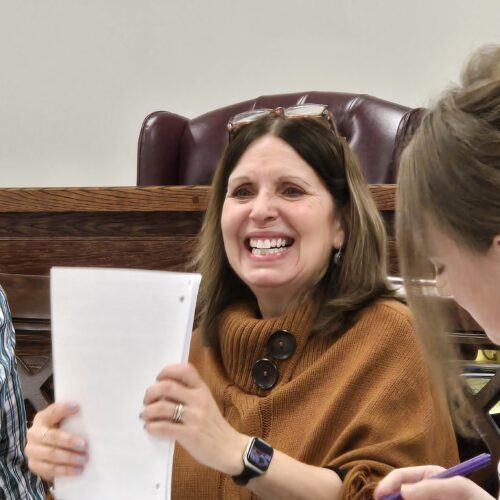

Town of Ripley Supervisor Laura K. Pless is pictured.
RIPLEY — Town council members at their regular meeting last month voted to donate $300 to the Westfield Little League in order to help offset expenses for that organization.
The decision was made in response to a letter from the Westfield Little League, asking for help to pay for uniforms, equipment and field maintenance for the upcoming season. “Your support would not only ensure that our players have the necessary resources to succeed on the field, but it would also provide Westfield Little League with an opportunity to give back to the community through youth sports,” the letter stated.
“We have a lot of kids from Ripley who participate in the Westfield Little League,” said Town Supervisor Laura K. Pless. “We felt it only right to donate to the organization.”
In other business, Planning Board Chairperson Raymond Dyer submitted a report stating the board has been trying to decide what to do with the town’s field by the Hut.
“The idea that we came up with was to have one or more food truck festivals and bring in bands to perform during these events,” the report stated. “There was also discussion about bringing a local church, the fire department, or other organization in for a possible fundraising opportunity at this time.”
Dyer also reported that plans for the town beautification are moving along. “Multiple board members are eager to volunteer their time to help plant flowers around the area, especially in pots or other planters, around the town’s sidewalks,” he said.
During the period of Privilege of the Floor, council members heard from Andrew Dickson of Jamestown, who noted that it is the hawk migration season. He encouraged people to come out on nice days and observe the birds around Route 5, Forsythe Road or Parker Road. “It’s spectacular,” he said. “You might see hundreds of hawks and falcons go by.”
In another matter, board members approved the summer recreation program, which will take place from July 7 to Aug. 15. Trent Johnson was approved as the summer recreation program director and Emma Lindsey and Anyah Carlson were approved to be summer recreation program assistants.
Town Assessor Jason Jones reported that Deputy Town Clerk Nicole Gollhardt is doing great in her training to be assessor. Her physical training will start in July and she continues to work in the Assessor’s Office twice a week, he said.
Rec Sports
Copper wire thieves target athletic fields across Maryland
WESTMINSTER, M.d. — Thieves are targeting athletic fields for copper wires with Carroll County the latest to experience the problem. “We’re not the only ones that they’re apparently targeting,” Bob Hicks, director of Carroll County Parks and Recreation, said. Copper wire from light poles at two fields at Deer Park in Westminster were stolen in […]
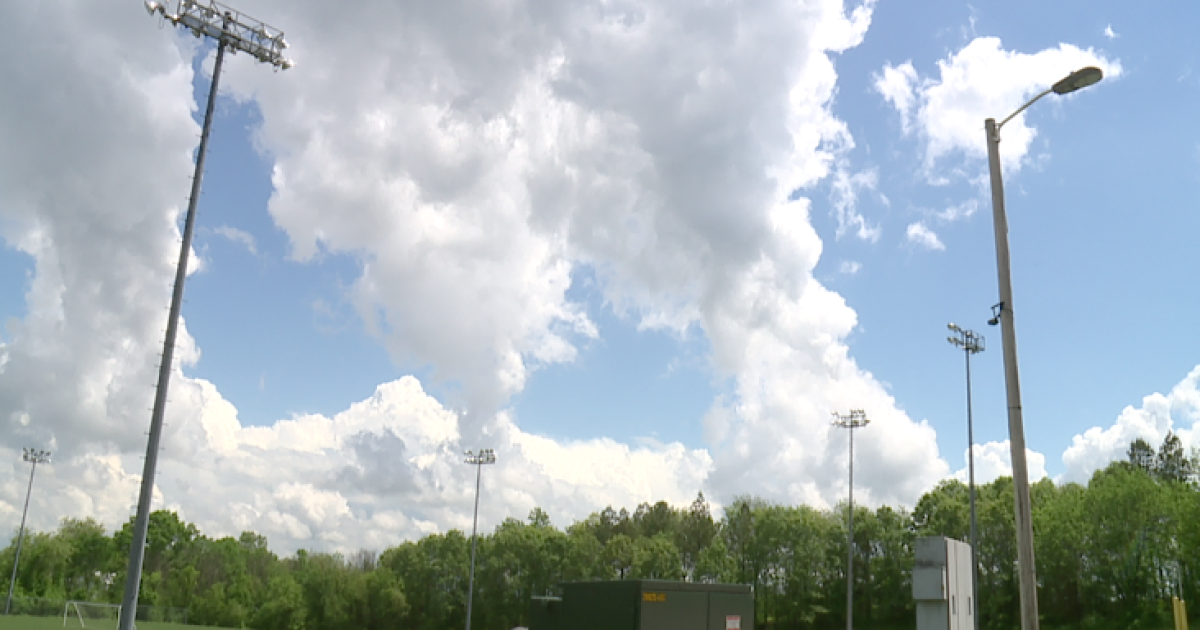
WESTMINSTER, M.d. — Thieves are targeting athletic fields for copper wires with Carroll County the latest to experience the problem.
“We’re not the only ones that they’re apparently targeting,” Bob Hicks, director of Carroll County Parks and Recreation, said.
Copper wire from light poles at two fields at Deer Park in Westminster were stolen in the last month. The first, at Memorial Field and most recently at Magin Field.
“They cut the wire between the light pole and the pull box and then pulled the wiring out of the box and it’s made of copper, so it has a high resale value for recycling,” Hicks said.
The crime, now keeping some kids sports programs in the dark.
“Sports in this county and around the area it’s very important to youth and we think it’s very vitally important for this community,” Hicks said.
It’s happening across Maryland.
WMAR-2 News confirmed there have been copper wire thefts at fields in Baltimore,A nne Arundel, Harford, and Howard counties.
Since last June, Anne Arundel police report there have been five copper wire related thefts at parks and school fields. There have also been five thefts since 2022 in Baltimore County.
READ MORE: Two accused of stealing copper wire from I-695 light poles, causing thousands in damage
According to a 2024 report from the Rural Broadband Association global demand and soaring prices for the metal is a major driving force behind the crime.
Criminals are known to target critical infrastructure, like communications systems.
While it can be a lucrative deal for opportunists, the crime comes with a hefty price tag for municipalities.
The cost to repair Memorial field’s wiring is around $18,000. Hicks is still waiting for an estimate for the other.
The Carroll County Sheriff’s Office is now investigating the reported thefts and if they are connected to others in the area.
Meanwhile, Hicks says they are working to bury the pull boxes to make it harder for thieves to make a successful getaway.
“Unless they’re looking to know exactly where to dig, they would be on ground and then they won’t be able to find it,” he said.
In Baltimore County, copper is being replaced with other metals, though other measures remain undisclosed due to security issues.
The Harford County Parks and Recreation department is installing tamper-proof access panels.
People are encouraged to report suspicious activity to police, such as:
• People and vehicles in parks after hours
• Panels unscrewed and opened on light poles
• Freshly-dug holes near athletic fields
• Any suspicious transportation or sale of bulk electric wiring
Rec Sports
Folsom Ranch Sports Complex plans submitted. What’s next?
The project is large enough to require environmental review, which typically means hearings by the city council and planning commission are about six months out. FOLSOM, Calif. — Plans for a large sports complex south of Highway 50 have been formally submitted to Folsom, and the city weighed in on next steps and a timeline […]

The project is large enough to require environmental review, which typically means hearings by the city council and planning commission are about six months out.
FOLSOM, Calif. — Plans for a large sports complex south of Highway 50 have been formally submitted to Folsom, and the city weighed in on next steps and a timeline for the project.
The Folsom Ranch Sports Complex, an approximately 410,000-square-foot recreation facility, will occupy almost 21 acres at the northeast corner of Prairie City Road and Alder Creek Parkway, officials said.
“A project of this magnitude, which will require environmental review, typically takes about six months before it is heard by the Planning Commission and the City Council,” the city wrote Monday in an email to ABC10. “We anticipate this project to be heard before the end of this year. The exact timeline will depend on the results of the city’s review and the duration of the environmental review process.”
Folsom said it will invite the community to participate in review through public hearings.
What does the proposed complex feature?
The facility is reportedly designed to host tournaments and practices for ice hockey, figure skating, basketball, volleyball, pickleball, lacrosse and soccer, among other sports.
- A 3,000-seat area with a National Hockey League-sized ice sheet.
- Two other NHL-sized ice sheets; the three rinks can provide nine youth rinks total when divided.
- Up to 24 volleyball courts or 27 youth basketball courts when converted.
- 145,000 square feet of outdoor space, including a 126,000-square-foot covered and lit outdoor turf field.
- About 20,000 square feet of medical treatment and office space focusing on sports rehabilitation.
The complex can accommodate live music, festivals, conferences and art galleries when not in use for sporting events, according to the company behind the project, The Mettle Shop.
Sacramento County is the largest county in the U.S. without a year-round ice facility and there are no full ice sheets within a 30-minute drive of the project site, The Mettle Shop said. The sports complex aims to address this “gap” while supporting what organizers said is a growing popularity of ice sports in California.
“We’re thrilled to reach this milestone in bringing a much-needed recreational facility to Folsom and the greater Sacramento region,” said Joe Wagoner, CEO of The Mettle Shop. “…Our vision is to create a venue that strengthens community bonds through sports, recreation, and entertainment.”
Folsom Mayor Sarah Aquino said the city’s eagerly awaited the facility’s formal application.
“A facility of this scale could bring exciting new opportunities for recreation, tourism, entertainment, and economic activity to our city,” she said. “While the concept still needs to go through the city’s thorough review process, we appreciate the developer’s investment in Folsom and look forward to learning more as the proposal moves forward.”
Folsom Ranch Sports Complex renderings. Here’s what it could look like
What are economic, other impacts on the community?
Applicants estimate the complex would serve more than 1.3 million visitors per year and annually generate $23.7 million from retail, lodging, food and entertainment sales.
The facility would create over 400 full-time jobs, ABC10 reported in 2022.
Joe Gagliardi, CEO of Choose Folsom which includes the Folsom Tourism Bureau, called the project a “game-changer” for the business community.
“The Folsom Ranch Sports Complex will drive new visitor spending, create jobs, and open doors for local businesses to grow alongside the city’s expanding infrastructure,” he said. “It reflects the kind of visionary development that supports both economic vitality and quality of life for our residents.”
Rich Francis, president of nonprofit Folsom Athletic Association, said the city’s local sports organizations have long advocated for more high-quality facilities.
“The Folsom Ranch Sports Complex will dramatically expand opportunities for our youth and adult athletes alike, allowing us to host tournaments and competitions that were previously impossible in our area,” Francis said. “Our association represents more than 15,000 young athletes and families through Recreational and Competitive teams, and this facility will only be a net positive.”
The Mettle Shop team said it has experience managing and operating professional and recreational sports in venues like Golden 1 Center, the Oakland Coliseum, Sutter Health Park and Heart Health Park.
WATCH MORE: California’s Newsom eyes potential team up with Trump to “Make America Film Again’
ABC10: Watch, Download, Read
-
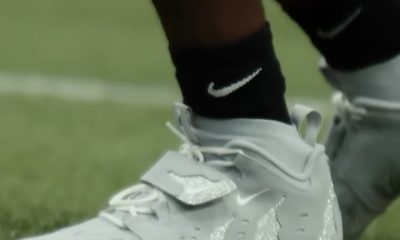
 Fashion2 weeks ago
Fashion2 weeks agoThis is poetry in motion.
-
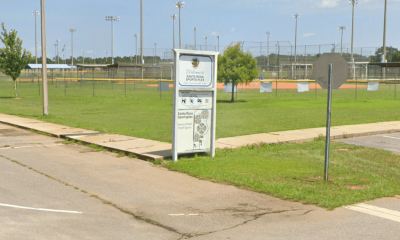
 Rec Sports2 weeks ago
Rec Sports2 weeks agoDeputies investigating incident that caused panic at Pace youth sports complex
-

 High School Sports2 weeks ago
High School Sports2 weeks agoAppling County football to forfeit all 10 wins from 2024
-
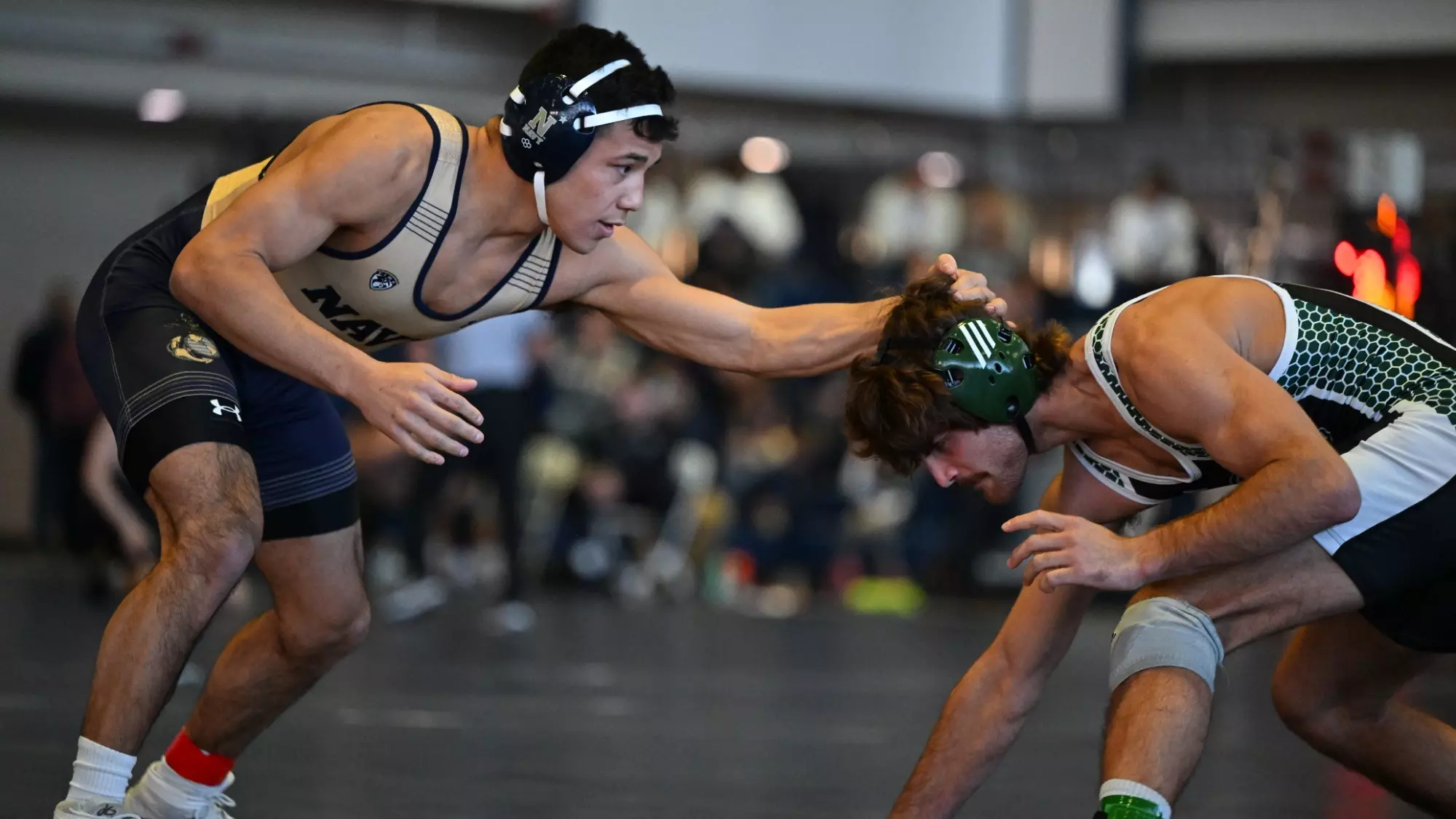
 College Sports2 weeks ago
College Sports2 weeks agoLehigh wrestlers prepare for wrestling U.S. Open
-

 NIL2 weeks ago
NIL2 weeks agoSave Like a Pro: NIL money isn’t free cash—taxes take a bite! Set aside part of …
-

 Sports2 weeks ago
Sports2 weeks agoHow to watch Yahoo Sports' NFL Draft Live show
-

 Fashion2 weeks ago
Fashion2 weeks agoWatch Saudi Arabian GP free live stream
-

 College Sports1 week ago
College Sports1 week agoDuke basketball's Isaiah Evans on 2025 NBA Draft early entry list
-
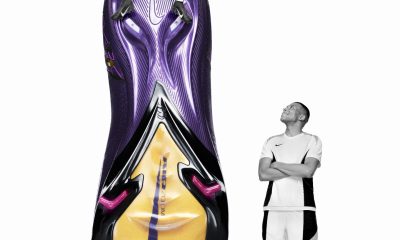
 Fashion2 weeks ago
Fashion2 weeks agohas always dreamed in Mercurial. Now his initials are on the boots. The new Kyl…
-

 Fashion4 days ago
Fashion4 days agoHow to watch Avalanche vs. Stars Game 7 FREE stream today

















